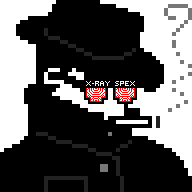Aside from Linux running on NASA hardware, phones and consoles. Does it run on ATM machines, PDAs and point of sale monitors?
I ask this because I’ve seen Windows being used in airport terminals and really old versions being used for cash machines as well. The crowdstrike problem made this more prevalent by seeing “non end user computers” using the OS.
Does Linux fill this niche as well do you know? I don’t recall hearing any big name embedded distro used for those sorts of machines. Maybe Alpine Linux or NetBSD?
Thank you in advance for your input!
I saw Linux used on Boeing passenger service systems.
I worked in retail until 2016, and a few years before I left they switched all the PoS registers to Linux.
I saw the self checkout machines in my supermarket being restarted a few times and caught a glimpse of what was shown on the screen. Before they were upgrade some time ago they showed that CentOS was running and now I think that I saw Rocky Linux running on there. So yes, these are definitely out there and used widely.
Also I’ve see pictures of Raspberry Pis being used almost everywhere.
Holy cow what country is this? All the self-service check outs in our Dutch Albert Heijns and Lidls use Windows 10/11!
A good boba tea shop, Sencha Silk near Arnhem Centraal, their self checkout used unregistered Windows 10’s and upgraded them to unregistered Windows 11’s recently, judging by the watermark on the bottom-right. Based.
It’s Aldi in Germany. Running Linux however does not prevent these machines from getting errors all the time so often times there are only 3/6 machines available since an employee has to reset the software manually.
deleted by creator
Pretty sure ATM runs on super old stuff like OS/2 or Windows XP or Windows CE ?
There’s not a distro because the companies that sell those pieces of equipment have their own software packages that sit on top of some distribution that they sell as a whole doohicky they call an appliance.
The distributions that are most often used are those with either direct support from a company the appliance manufacturer can work with or some distro that’s feature compatible with one of those kinds.
The Deutsche Bahn uses Linux for the displays in their trains, that show you the next stops, at least. Saw the systemd startup thingy on one of those displays once when the train restarted while I was in it.
Yes. My work uses Ubuntu for certain touchscreen PoS devices they sell to their customers. It runs their proprietary apps automatically, and the end user doesn’t know or care that it’s Linux underneath.
What are PoS devices?
Point of sale. The devices you stick your card into to pay.
Yep, though in this case, it’s more like a cash register/scanner than a card reader.
Pieces of shit devices
(Point of Sale, jokes aside. But they often are POS as well.)
There are tons of computers running Linux besides PCs. By far the biggest part are servers and supercomputers. Microsoft even has their own distribution for their server business. Then there are all the Android phones and devices. Android is Linux. In Germany I’ve also often seen Linux used for kiosks at government agencies.
Linix is used in TVs and set top boxes. Everything that says Tizen or WebOS is powered by Linux. I’ve also seen it used as in-flight entertainment systems. And Lunduke had an example of Linux running on a machine controlling how cows are milked, if I recall correctly.
For most systems you won’t actually know what OS is used until you see a hardware error screen. Although Microsoft has made it a little easier with mandatory updates.
I am not positive but if it still true originally webos was not linux. It started off as a very ahead of its time cell phone os made by Palm Inc. After they failed to gain traction it was sold to LG or made open source then sold or bought. LG uses it in their TVs but if I recall the base os is not Linux but some form of palmos assuming it has not been moved to Linux.
Nah, WebOS was already Linux when Palm used it on their phones. I had one of them. I preferred the N900 and it could even run games made for WebOS.
The digital sign the local university has is powered by a Raspberry Pi - I caught it rebooting while driving past
A ton of digital signage (think fast food restaurant menus) run Linux as well.
Most home routers do as well.
Wouldn’t a home router with Windows cost way more because of the licence?
More, but not way more - they would be licensing window IoT, not a full blown OS, and they wouldn’t be paying OTC retail rates for it.
Probably would also need like ten times the amount of ram and disk space. These things usually run on 64/128Mb of RAM and anywhere from 8 to 32Mb of flash.
I think those numbers might be on the low side. Like, not by heaps though. My Asus RT-AC86U has 512MB of RAM and 256MB of flash. It’s not exactly new either, I’d imagine an AX router would need more.
Yeah for wifi ax/6 they are. But they are perfectly normal for AC. N even ran on stuff like 4mb of flash and 32mb of ram.
Don’t most routers run some form of BSD?
my old GPS device runs on Linux. My PC also runs on Linux. To transfer updated maps from the PC to the GPS you needed a proprietary software that only ran on Windows. God, that pissed me off.
Lol kinda related, but Uconnect sent me an email a few months ago about the GPS maps in my car (11 years old at this point) being way out of date…they wanted $300 (or something like that) for a flash drive with the map update.
Lmao, like it wasn’t 2024 and Google Maps on my phone does a far better job than their proprietary crap they want 300$/update for
I have had seen a few in-flight entertainment systems crash and reveal that they run Linux. The crashes have been due to network issues as far as I could tell ( so no strike against Linux for that ).
Similar story for display panels at fast food places and hotels. Online, I have seen at least one Linux billboard.
My company uses Linux extensively for video monitoring systems in vehicles like busses, fire trucks, ambulances, and police cars.
Not sure if that’s the kind of device you are asking about but kobo e-readers run Linux. It’s allowed me to sideload my books over SFTP instead of always having to plug in a USB cable
Linux is much more commonly used in embedded systems than Windows for obvious reasons.
Linux on phones and tablets is a thing. Typing from my Xiaomi Pad 5 Pro running postmarketOS and LibreWolf.
One, although it’s rare to have phones that support it, I do dream of owning a Linux phone one day.
Two, I have no idea why I was surprised to run across the OpenRGB guy on Lemmy.















